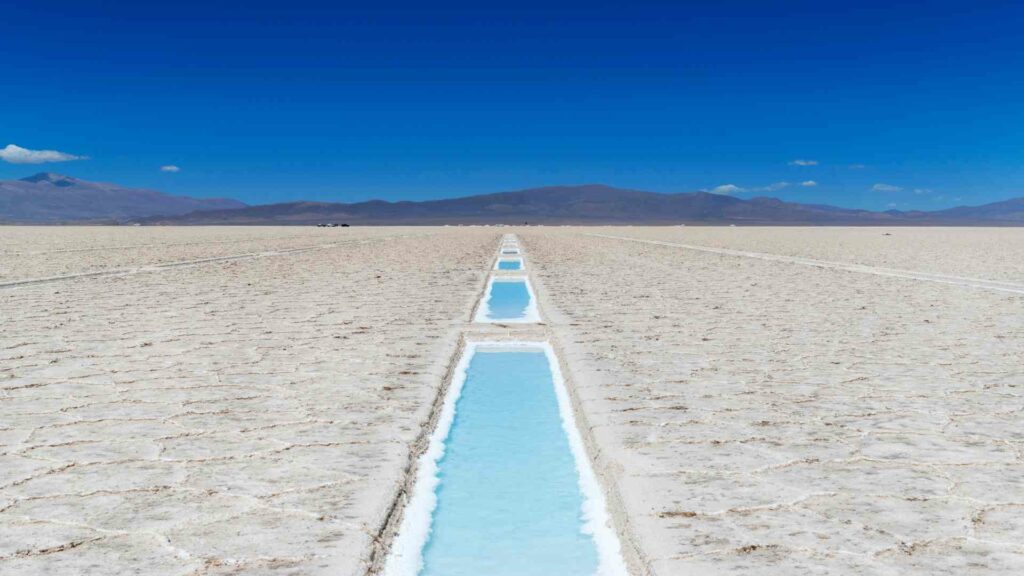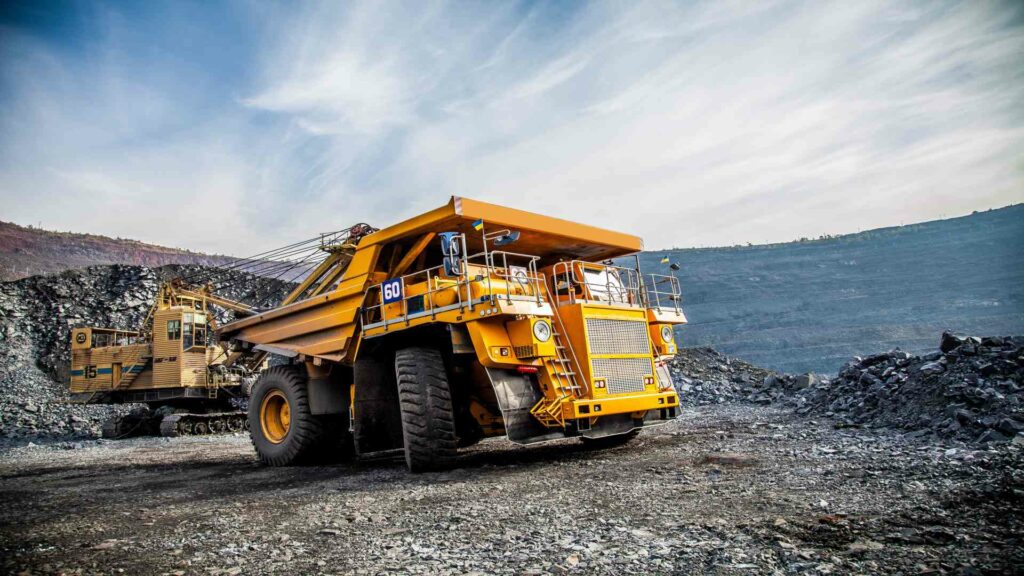Boron’s Industrial Minerals
Boron Minerals are found in the Earth’s crust; various forms come from different geological structures, such as pegmatite and metamorphic rocks. Today’s most common boron minerals include Tincal, Tincalconite, Colemanite, Kernite, Ulexite, Pandermite, Boracite, Hydroboracite, Inderite, Ascharite, Datolite, Sassolite, Meyerhofferite, Inyoite, and Probertite.
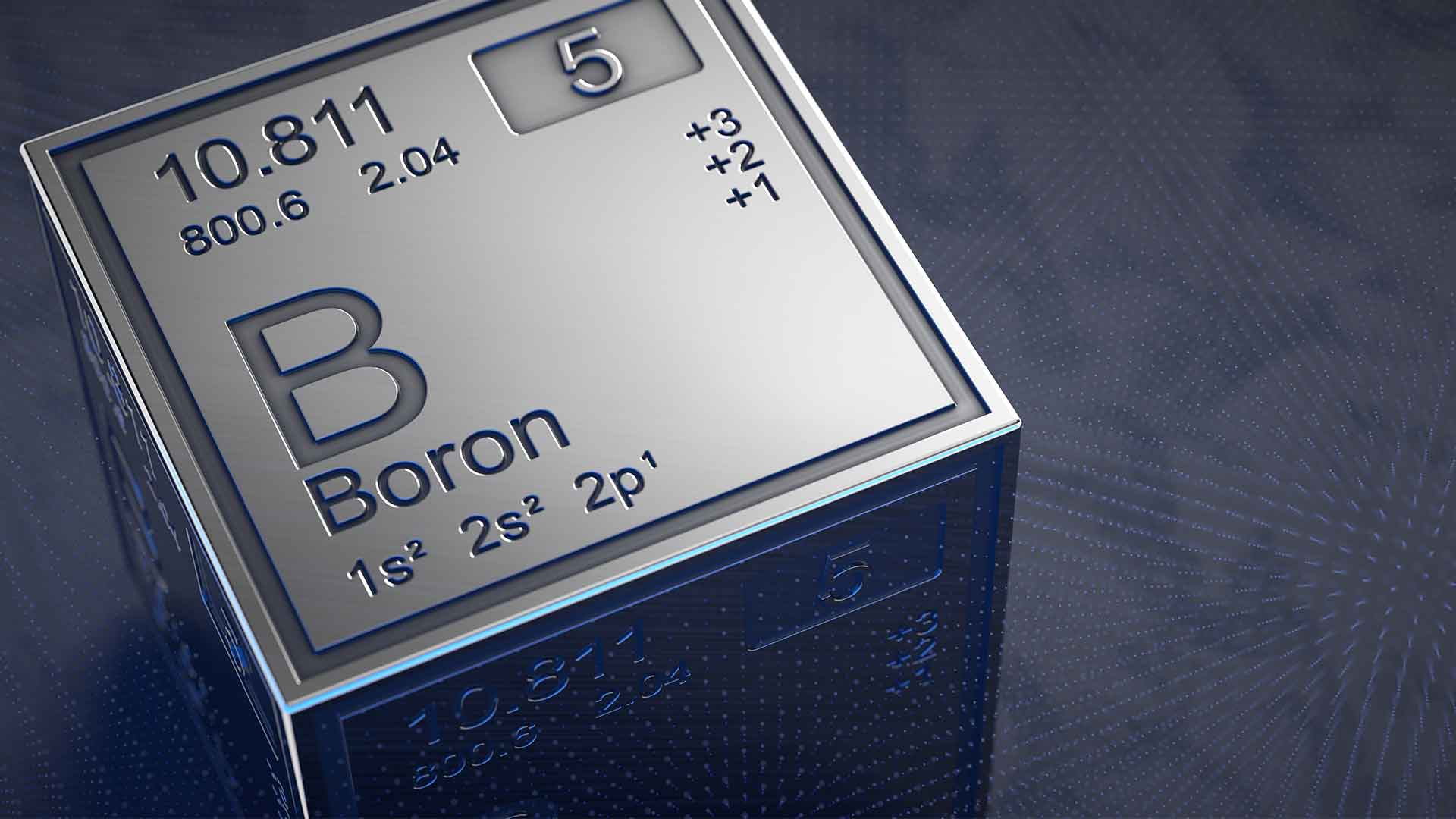
Major Commercial Boron Minerals
The main commercial Boron Minerals are:
| Boron Minerals |
|---|
| Kernite |
| Tincalconite |
| Probertite |
| Ulexite |
| Colemanite |
| Meyerhofferite |
| Inyoite |
| Pandermite |
| Inderite |
| Hydroboracite |
| Boracite |
| Ascharite |
| Datolite |
| Sassolite |
These are each discussed below.
Kernite
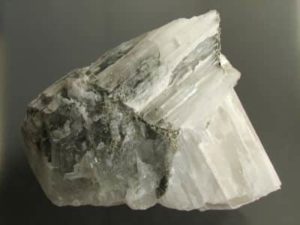
Boron – Kernite
Kernite, also known as rasorite, is a hydrated sodium borate hydroxide mineral with the formula Na2B407.4H2O. It is a colorless or white mineral crystallizing in the monoclinic crystal system, typically occurring as prismatic to acicular crystals or granular masses. It is relatively soft with a Mohs hardness of 2.5 to 3 and light with a specific gravity of 1.91. It exhibits perfect cleavage and a brittle fracture. Kernite is soluble in cold water and alters to tincalconite when it dehydrates. It undergoes a non-reversible alteration to metakernite when heated to above 100 °C.
Kernite was named for “Kern” county, discovered in 1926—at the US Borax Mine, Boron, Kramer District, eastern Kern County, western Mojave Desert, Southern California, U.S. More recently, it was discovered in Argentina, Spain, and Turkey and is now being mined.
Uses: Kernite produces a white crystalline substance known as borax, best used in soaps.
Source: MSRBLOG
Tincalconite
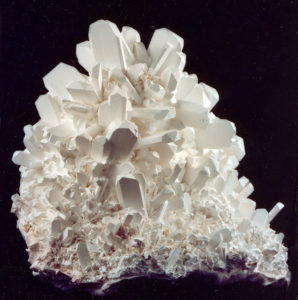
Boron – Tincalconite
Tincalconite is a hydrous sodium borate mineral closely related to borax and is a secondary mineral that forms as a dehydration product of borax. Its formula is Na2B4O7·5H2O or Na2[B4O5(OH)4]·3H2O. Tincalconite typically occurs as a fine-grained white powder. It crystallizes in the hexagonal crystal system and has been found as primary euhedral di-rhombohedral, pseudo-octahedral crystals. It is also found as a pseudomorph, replacing borax crystals. It has a specific gravity of 1.88 and a Mohs hardness of 2. While man creates most tincalconite by exposing borax to dry air, there are natural occurrences of tincalconite, as in Searles Lake, California, where it was first described in 1878. In addition to several California and Nevada locations, it is reported from Argentina, Italy, Turkey, and Ukraine.
Uses: Tincalconite is great for absorbing odors while being gentle on surfaces and is also perfect as an all-purpose cleaner.
Source: Wikipedia
Probertite
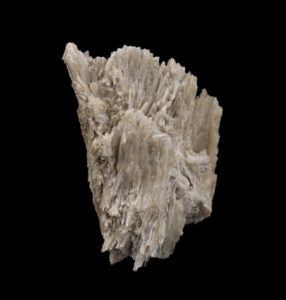
Boron – Probertite
Probertite occurs as one of the boron minerals of the kernite deposit in the Kramer District, Kern County, California. Its formula is NaCaB5O9·5H2O. It is a colorless mineral crystallizing in the monoclinic system, which consists of hydrous sodium calcium borate. The name “Probertite” was proposed for the mineral in honor of Frank H. Probert, Dean of the Mining College, University of California, to whom we are indebted for specimens, photos, and notes of its occurrence.
Uses: People have sought out proberite for its decorative uses. It can be used in jewelry. The stone is durable against water and is often mistaken to be hematite due to its similar colors. With buyers’ desires continuing to change, probertite at Stone Lines has received a dramatic increase in popularity over the years.
Source: Wikidata
Ulexite
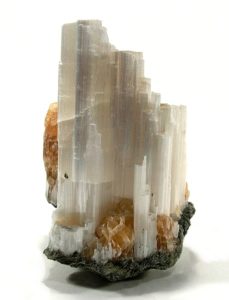
Boron – Ulexite
Ulexite (NaCaB5O6(OH)6·5H2O, hydrated sodium calcium borate hydroxide), sometimes known as TV rock, is a mineral occurring in silky white rounded crystalline masses or parallel fibers. The natural fibers of ulexite conduct light along their long axes by internal reflection. Ulexite was named after the German chemist Georg Ludwig Ulex (1811–1883), who first discovered it. It is a structurally complex mineral with a basic structure containing chains of sodium, water, and hydroxide octahedra. The chains are linked together by calcium, water, hydroxide, oxygen polyhedra, and massive boron units. The boron units have a formula of [B5O6(OH)6]3– and a charge of −3. They are composed of three borate tetrahedra and two triangular borate groups.
Uses: Ulexite fibers are optical fibers transporting light along their lengths by internal reflection. A good-quality specimen of ulexite will exhibit an image of whichever surface is next to its opposite side when cut with flat polished sides perpendicular to the direction of the fibers. Additionally, it will form independently when you dissolve ulexite into solutions with calcium carbonate.
Source: Wikipedia
Colemanite
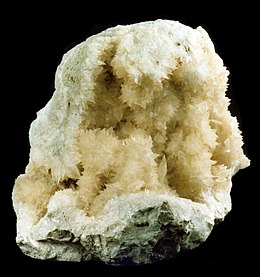
Boron – Colemanite
Colemanite (Ca2B6O11·5H2O) or (CaB3O4(OH)3·H2O) is a boron mineral found in evaporite deposits of alkaline lacustrine environments. Colemanite is a secondary mineral that forms by altering borax and ulexite. It was first described in 1884 for an occurrence near Furnace Creek in Death Valley and was named after William Tell Coleman (1824–1893), owner of the mine “Harmony Borax Works,” where it was first found. At the time, Coleman had alternatively proposed the name “smithite” after his business associate Francis Marion Smith.
Uses: A boron ore, Colemanite is an important material with many uses. It can be used to make heat-resistant glass and was even the most popular form of boron until 1926 when Kernite became available.
Source: Wikipedia
Meyerhofferite
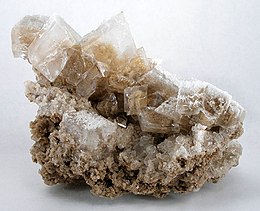
Boron – Meyerhofferite
Meyerhofferite is a hydrated boron mineral of calcium, with the chemical formula Ca2B6O6(OH)10·2H2O, CaB3O3(OH)5·H2O or Ca2(H3B3O7)2·4H2O. It occurs principally as an alteration product of inyoite, another boron mineral. Natural meyerhofferite was discovered in 1914 in Death Valley, California. It is named after the German chemist Wilhelm Meyerhoffer (1864–1906), who collaborated with J. H. van Hoff on the composition and origin of saline minerals who first synthesized the compound.
Source: Wikipedia
Inyoite
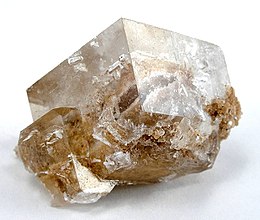
Boron – Inyoite
Inyoite, named after Inyo County, California, discovered in 1914, is a colorless monoclinic mineral. It turns white on dehydration. Its chemical formula is Ca(H4B3O7)(OH)·4H2O or CaB3O3(OH)5·4H2O. Associated minerals include priceite, meyerhofferite, colemanite, hydroboracite, ulexite, and gypsum.
Uses: Inyoite alters by partial dehydration to meyerhofferite and colemanite, both used as raw materials for borax and other boron-related products.
Source: Wikipedia
Priceite (Pandermite)
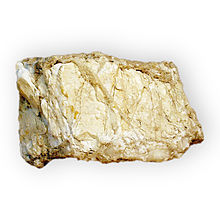
Boron – Priceite (formerly Pandermite)
Pandermite is a white mineral consisting of a hydrated borate of calcium boron mineral species, published in 1877. Still, the California mineral Priceite had already been described by that time, so the name Priceite has precedence even though Pandermite was known earlier, which is now regarded as identical to Priceite. The thermal decomposition of Pandermite follows the same two-stage decomposition pattern. The first stage involves 3.5 mol of water at 438 °C, followed by 0.5 mol at 438 °C. A rearrangement then takes place at 525 °C to form a tetraborate.
Uses: “Pandermite” was originally a white, marble-like rock from the Panderma area used for carving statues. French amateur chemist Desmazures analyzed one such statue in 1865.
Source: Wikipedia
Inderite
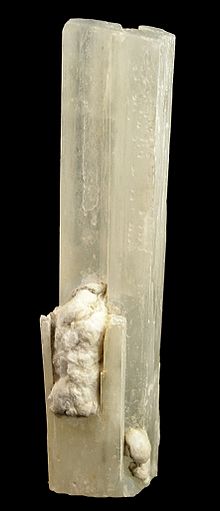
Boron – Inderite
Inderite, also known as Lesserite, is a mineral named after its source, the Inder lake, near Inder mountain in Kazakhstan. The samples were described in English by the Soviet mineralogist Boldyreva in 1937. It’s a rare secondary mineral but is common in salt, potassium, and borate deposits.
Uses: Inderite is a hydrated neotriborate boron mineral found in gemology despite its qualities. This soft, white-to-reddish brown-colored stone must always be cut on top of the felt to avoid scratching the surface and drying it after cutting for storage purposes. It’s considered rare because there are only a few mines containing inderite, but due to this fact, sometimes.
Source: Wikipedia
Hydroboracite
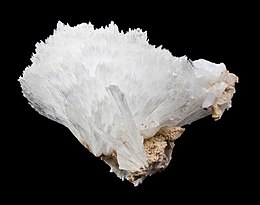
Boron – Hydroboracite
Hydroboracite is a hydrated borate mineral (hence the name) of calcium and magnesium, whose chemical composition is CaMgB6O8(OH)6·3H2O. It was discovered in 1834 in Atyrau Province, Kazakhstan. Hydroboracite is a minor borate ore mineral. Hydroboracite is a combination of the minerals calcium, magnesium, and boron.
Uses: Hydroboracite, the sodium-based form (borax), is highly soluble and quickly releases boron. This is ideal for trees found in forestry environments with acidic soils where they might otherwise not last as long without treatment due to their sensitive nature towards absorbing harmful levels of salt through their roots when exposed at lower pH levels present within such ecosystems.
Source: Wikipedia
Boracite (used to make Boric Acid)
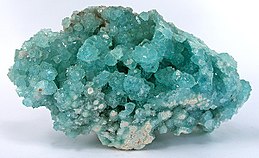
Boron – Boracite
Boracite is a magnesium borate mineral with the formula: Mg3B7O13Cl. It occurs as blue-green, colorless, gray, yellow to white crystals in the orthorhombic-pyramidal crystal system. Boracite also shows pseudo-isometric cubical and octahedral forms. These are thought to be the result of the transition from an unstable high-temperature isometric state to cooling. Penetration twins are not unusual. It occurs as well-formed crystals and dispersed grains often embedded within gypsum and anhydrite crystals. It has a Mohs hardness of 7 to 7.5 and a specific gravity of 2.9. It has a conchoidal fracture and does not show cleavage. It is insoluble in water (not to be confused with borax, which is soluble in water). Boracite is typically found in evaporite sequences associated with gypsum, anhydrite, halite, sylvite, carnallite, kainite, and hilgardite. It was first described in 1789 for specimens from its type locality of Kalkberg hill, Lüneburg, Lower Saxony, Germany. It is also found near Sussex, New Brunswick.
Uses: Boracite is a gemstone that forms in the earth and can be used for cleaning or industrial chemicals. Some people use it to make boric acid, which has many uses across industries like food production because of its antiseptic properties.
Source: Wikipedia
Ascharite
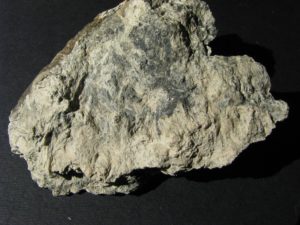
Boron – Ascharite
Ascharite is a hydrated magnesium borate occurring in white lumps with boracite found near Aschersleben, Germany, Mg2(OH)[V2O4(OH)]. Ascharite is a rare mineral that forms from the endogenous deposits of boron ores and salt-bearing sedimentary strata. It is found in large clusters within halogenous strata and is common in serpentinite mines with high concentrations such as suanite or kotoites.
Uses: The sulfuric acid method reduced the Ascharite rock’s base components of boric acid and kieserite. The results yielded an average recovery rate for both substances, which is 71.06% for boric acid and 45.03% for kieserite.
Source: Common Wikimedia
Datolite
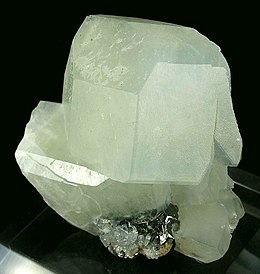
Boron – Datolite
Datolite is a calcium boron hydroxide nesosilicate, CaBSiO4(OH). Jens Esmark first observed it in 1806. Datolite crystallizes in the monoclinic system forming prismatic crystals and nodular masses. The luster is vitreous and may be brown, yellow, light green, or colorless. The Mohs hardness is 5.5, and the specific gravity is 2.8 – 3.0. It is a secondary mineral in mafic igneous rocks, often filling vesicles and zeolites in basalt. Unlike most localities throughout the world, the occurrence of datolite in the Lake Superior region is usually fine-grained in texture and possesses colored banding. Much of the coloration is due to the inclusion of copper or associated minerals in progressive stages of hydrothermal precipitation.
Uses: Datolite is a stone that has many uses. It can be used as a collector’s gemstone, and the nodules from Michigan are sliced and polished to create ornamental or minor gemstones.
Source: Wikipedia
Sassolite
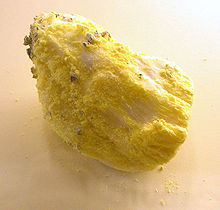
Boron – Sassolite
Sassolite is a boron mineral and is the mineral form of boric acid. It occurs in volcanic fumaroles, hot springs, and bedded sedimentary evaporite deposits.
Its mineral form was first described in 1800 and was named after Sasso Pisano, Castelnuovo Val di Cecina, Pisa Province, Tuscany, Italy, where it was found. The mineral may be found in lagoons throughout Tuscany and Sasso. Usually colored white to gray, it is colorless in transmitted light and can also take on a yellow color from sulfur impurities or brown from iron oxides.
Uses: In nature, boric acid is in the form of a mineral called sassolite. Sassolite has been used for centuries to purify drinking water by filtering out any impurities like bacteria or dirt particles that might have entered with it from outside sources such as rainwater runoff or other contaminated wells nearby. In addition to their use at home, sassolites are also employed industrially wherever there’s a need for cleaner liquids because of their unique ability to filter without breaking down.
Source: Wikipedia

